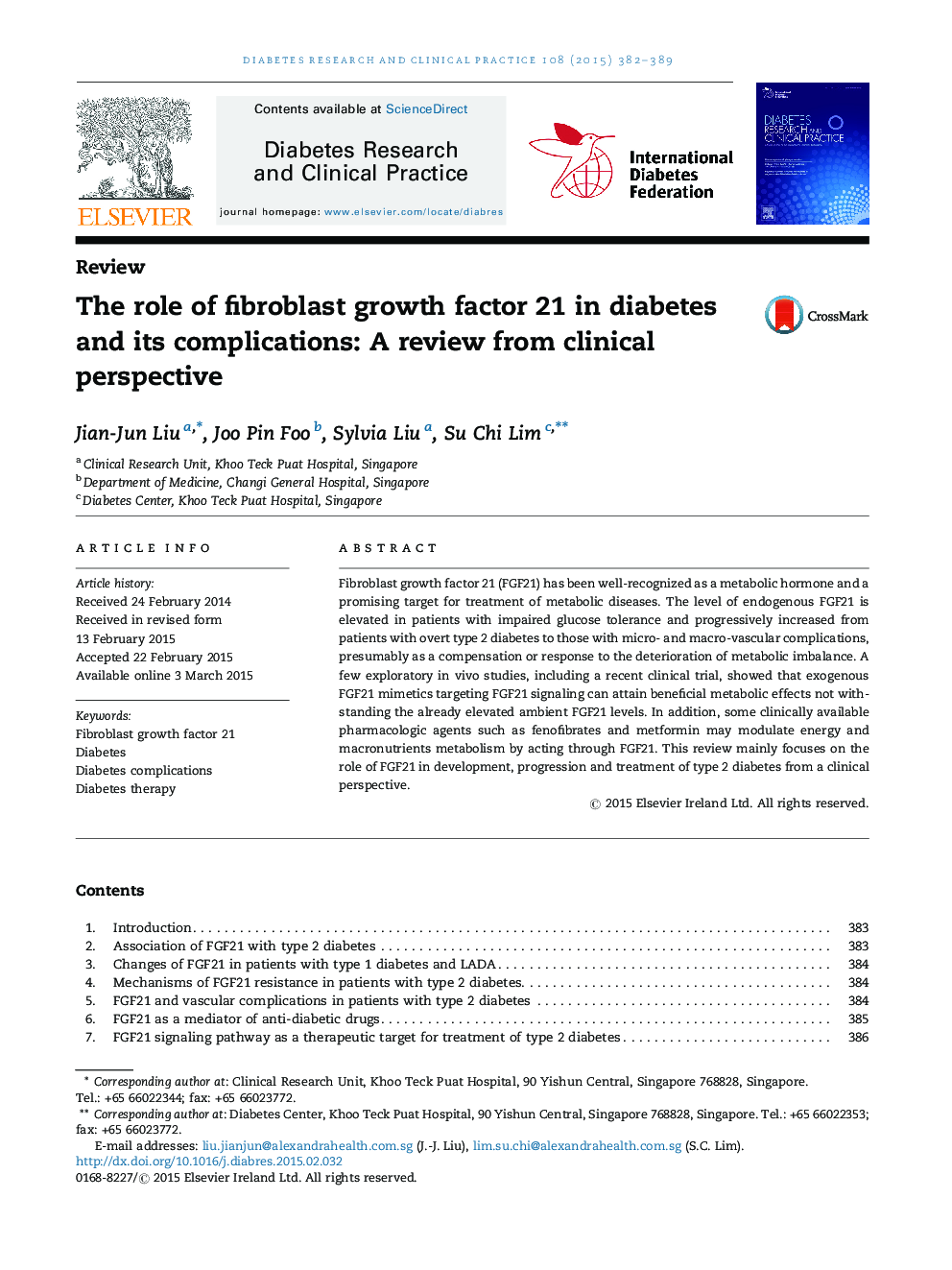| Article ID | Journal | Published Year | Pages | File Type |
|---|---|---|---|---|
| 5899284 | Diabetes Research and Clinical Practice | 2015 | 8 Pages |
â¢Circulating FGF21 level is increased in patients with type 2 diabetes (T2DM).â¢Increased level of FGF21 in patients with T2DM may be attributable to FGF21 resistance.â¢Circulating FGF21 level is associated with both micro- and macro-vascular complications in patients with T2DM.â¢FGF21 may be a mediator of anti-diabetic drugs.â¢FGF21 signaling pathway is a potential therapeutic target for treatment of T2DM and its complications.
Fibroblast growth factor 21 (FGF21) has been well-recognized as a metabolic hormone and a promising target for treatment of metabolic diseases. The level of endogenous FGF21 is elevated in patients with impaired glucose tolerance and progressively increased from patients with overt type 2 diabetes to those with micro- and macro-vascular complications, presumably as a compensation or response to the deterioration of metabolic imbalance. A few exploratory in vivo studies, including a recent clinical trial, showed that exogenous FGF21 mimetics targeting FGF21 signaling can attain beneficial metabolic effects not with-standing the already elevated ambient FGF21 levels. In addition, some clinically available pharmacologic agents such as fenofibrates and metformin may modulate energy and macronutrients metabolism by acting through FGF21. This review mainly focuses on the role of FGF21 in development, progression and treatment of type 2 diabetes from a clinical perspective.
